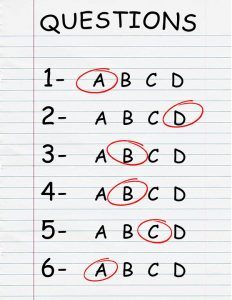
Have you taken the Test of English as a Foreign Language (TOEFL) and want to know what your scores mean? Or are you about to take the test and don’t know what a “good” or “bad” TOEFL score is?
No matter what your question about TOEFL scores is, you’ve come to the right place!
The TOEFL is an important test for your academic needs, and understanding how the scoring system works will let you more easily plan for the future. In this guide, we’ll show you everything you need to know about the TOEFL score range, where your scores (or potential scores) fit into the ranks, and how to set your future TOEFL score goals.
What Is the TOEFL Score Range?
The TOEFL scoring system depends on the type of TOEFL you take. Right now, there are two different types of TOEFL available: the paper-based test (PBT) and the internet-based test (iBT). 97% of all TOEFLs are iBTs, so this is the test you’ll most likely take. PBTs are given only where internet testing is unavailable.
(To see whether your country or testing center offers the iBT or PBT, check out our guide to TOEFL test dates and test centers.)
Each test has a different TOEFL scoring system, so let’s compare.
By the way: we have built the world's best online TOEFL course. Get online practice (TPO-sytle!) and individual grading and feedback on Speaking and Writing.
To be fair, it's possible to get a good TOEFL score studying alone. But PrepScholar is the world's most effective TOEFL course if you are worried about the TOEFL and are struggling to improve your score.
Learn how you can improve your TOEFL score by 15 points today.
iBT TOEFL Score Range
About ten days after you take the iBT TOEFL, you’ll be able to see your score report online as a PDF. You’ll also receive a physical copy of your TOEFL score report in the mail 3 – 6 weeks after your test date.
The TOEFL score range is between 0 and 120 for the whole test and 0 – 30 for the individual sections. But what, exactly, does this mean?
The lowest TOEFL score you can earn on the iBT is a 0.
The highest TOEFL score you can earn on the iBT is a 120.
Note that universities tend to care most about this, your total TOEFL score, though some schools will also look at your individual section scores (especially your speaking score).
In addition to your total TOEFL score, your score report will also show your individual section scores. Each of the four sections of the test—reading, listening, speaking, and writing—is scored from a minimum of 0 points to a maximum of 30 points.
Your total TOEFL score is the sum of all four section scores (with a maximum TOEFL score of 30 + 30 + 30 + 30 = 120 points).
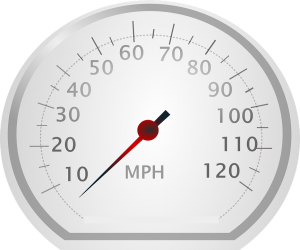
PBT TOEFL Score Range
If you take the paper-based test, you’ll receive a mailed score report 3 – 6 weeks after you take your test. Just like the iBT, your score report will give you both your total TOEFL score as well as your individual section scores.
The TOEFL score range on the PBT is 310 – 677. This means that:
The lowest TOEFL score you can earn on the PBT is a 310.
The highest TOEFL score you can earn on the PBT is a 677.
Again, like the iBT, schools tend to pay the most attention to your total TOEFL score, though some schools will also look at your individual section scores.
There are three multiple choice sections—listening, written expression, and reading—and you will get an individual score for each section. You will also have to write an essay, on which you can earn a minimum score of 0 and a maximum score of 6.
How Does TOEFL Scoring Work?
The total number of questions you answer correctly on each section of the TOEFL will give you what test makers call a “raw” score. A raw score doesn’t mean much on its own and must be converted to a “scaled” score by a computer.
You will earn 1 to 3 raw points for every multiple choice question you answer correctly and 0 points for every incorrect answer. There is no penalty for answering a question wrong, so feel free to guess if you don’t know the correct answer!
After you’ve finished the test, your raw score will automatically be converted into a scaled score. The scaled score will be the score you (and your schools) see on your TOEFL score report.
Because the iBT and the PBT differ, they have different raw scores, scaled scores, and score percentiles. So let’s take a look at each test.
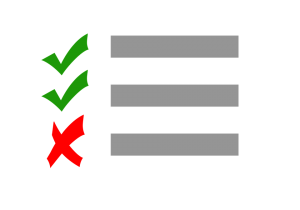
TOEFL Score Range Percentiles
If you’re wondering what your scores mean exactly, then it can be a good idea to think of your scores in terms of percentile rank. Percentile rankings show how well you performed on the test compared to everyone else who took the TOEFL.
For example, if you scored in the 40th percentile, that means you scored higher than 40% of everyone who took the test and lower than 60% of all the people who took the test. And if you scored in the 80th percentile, then you did better than 80% of everyone who took the test.
Here’s a chart of the percentile ranks of the iBT, both for the scaled scores of each iBT section and for total iBT TOEFL scores.
| Percentile Rank | Reading Score | Listening Score | Speaking Score | Writing Score | Total Score |
| 10th | 11 | 11 | 15 | 14 | 52 |
| 25th | 17 | 16 | 18 | 18 | 68 |
| 50th | 22 | 21 | 21 | 22 | 84 |
| 75th | 26 | 26 | 24 | 25 | 97 |
| 90th | 29 | 29 | 27 | 27 | 106 |
Conversion Between iBT and PBT Scores
Because so few people take the PBT, the test-makers do not offer PBT percentile rankings. But never fear! You can still find your PBT percentile rank by using both the percentile information from the iBT percentile chart and the information in the iBT/PBT conversion score chart below. If you’re taking a PBT and need to know the score conversion between the iBT and the PBT (or if you’re just curious), then look no further!
(Special note: no two TOEFLs are the same, so these are just general scoring ranges and guidelines.)
| iBT Total Score | PBT Total Score |
| 111 – 120 | 640 – 677 |
| 96 – 110 | 590 – 639 |
| 79 – 95 | 550 – 589 |
| 65 – 78 | 513 – 549 |
| 53 – 64 | 477 – 512 |
| 41 – 52 | 437 – 476 |
| 30 – 40 | 397 – 436 |
| 19 – 29 | 347 – 396 |
| 6 – 18 | 311 – 346 |
| 0 -5 | 310 |
Let’s go through an example of how to use this chart to say you earned a 570 on the PBT and you want to know your percentile rank. If you look to see where 570 lands on the iBT/PBT conversion chart, you can see that a PBT score of 550 – 589 is equivalent to a 79 – 95 on the iBT. 570 lies in the lower end of the spectrum, so it’s probably about equal to an 83 – 85 on the iBT. The 50th percentile for an iBT is an 84, which is right in the middle of our range. A PBT score of 570, therefore, is approximately the 50th percentile.
What’s a Good TOEFL Score?
What makes a good TOEFL score depends entirely on you and your reasons for taking the test. TOEFL scoring and score ranks are somewhat subjective; what matters is what you need your score to do for you.
The average TOEFL score is the 50th percentile, which is a total score of 84 on the iBT and somewhere between 550 and 589 on the PBT. The average/50th percentile score means that exactly half (50%) of all people who took the test earned less than an 84 on the iBT and half earned more than an 84.
As a general rule, earning a higher than average score means that you’ve earned a good score. Anything above an 84 on the iBT or a 570(ish) on the PBT could, therefore, be considered a good TOEFL score.
The problem is that different schools require different TOEFL scores, so getting a slightly higher than average score might not be enough to get you into the school you want.
Most schools have a minimum threshold score that you must earn to be accepted into the program. This means that a good TOEFL score depends on what you need—if your school requires that applicants earn a minimum score of 80 on the iBT TOEFL, then a score of 80 or 81 would be a good iBT TOEFL score. But if your dream school requires that applicants earn a total score of 110 on the iBT, then a good TOEFL score for you would be above the 90th percentile.
Many schools require applicant TOEFL scores of either 90 or 100 total points on the iBT or 580 or 600 on the PBT. So a score above 90 on the iBT or above 580 on the PBT is generally considered a pretty good score. But, again, whether you got a “good” or “bad” score depends on what you need your scores to do for you! A good score will be whatever score you need to get you into your specific school(s) of choice.
Want to improve your TOEFL score? We have the world's leading TOEFL course.
Built by world-class instructors from Harvard and MIT, the course offers individual review, interactive lessons, and realistic online praactice, at an affordable price! It's the fastest way to get your target TOEFL score.Some schools also require a specific minimum score per section, so be sure to pay attention to your reading, listening, speaking, and writing section scores as well as to your total TOEFL score. Even if your total TOEFL score is high, you may not meet the minimum standards for a particular section, so be sure to always double-check your school’s requirements.
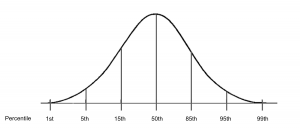
How to Set a TOEFL Score Goal
Not every school has a minimum TOEFL score requirement, but many of them do. Your first step should always be to go to the admissions page of your school(s) of choice. Under the “language requirement” and/or “international applicants” section, you will see information about their TOEFL test requirements, including whether or not they require the TOEFL, whether they require a minimum TOEFL score, and what that minimum score is.
One way to shortcut this process is to type in “[school name] + admissions + TOEFL.” (Note: If this brings you to the wrong admissions page, then you may need to narrow your search by typing “undergraduate” or “graduate” admissions.) This will bring you directly to the page on their website where they discuss the TOEFL and provide the necessary info about scoring.

Whatever the minimum TOEFL score is for your school(s) of choice should be your TOEFL score goal.
Don’t worry about trying to exceed the minimum TOEFL score for your school! The TOEFL is just a tool to demonstrate to the admissions committee that you speak English well enough to attend a university instructed in English. You don’t need to use your TOEFL scores to show off. Getting a TOEFL score in the 90th+ percentile won’t have nearly as much positive impact on your application as an SAT/ACT score in the 90th+ percentile will.
If you’re applying to multiple schools and they have different minimum TOEFL requirements, or if some of your schools don’t have a minimum TOEFL score requirement, then set your score goal to the highest minimum score on your school list. That way you’ll be aiming to reach or exceed the TOEFL score requirements for all the schools on your application list.
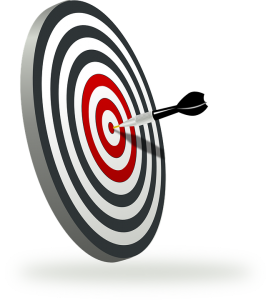
TOEFL Score Range: What You Need to Know
The more information you know about the TOEFL, the more prepared you’ll be for the test. Knowing your potential minimum and maximum TOEFL scores, as well as what is widely considered to be a “good” or “bad” TOEFL score will give you an idea of where you stand and will help guide you in your studies (or even potential test re-takes).
Be sure to always look up what kinds of total TOEFL scores your schools of choice require and whether or not they also require minimum section scores. This information will provide you with a score goal and help you plan your TOEFL studies and school applications. Happy studying!
What’s Next?
Want more information on how the TOEFL is scored? Check out our guide to learn exactly how the TOEFL is scored so you can maximize the number of points you get.
What score should you be aiming for on the TOEFL? Learn what a good TOEFL score is and how you can figure out what your goal score should be.
Practice tests are one of the best ways to prepare for the TOEFL. We’ve gathered information on the highest-quality TOEFL practice tests into one place so you have access to the best study materials.
Ready to improve your TOEFL score by 15 points?
Download our best TOEFL Strategy eBook (valued at $14.49) for FREE! Learn the top 5 strategies you must know to improve your TOEFL score. Download it for free now:
